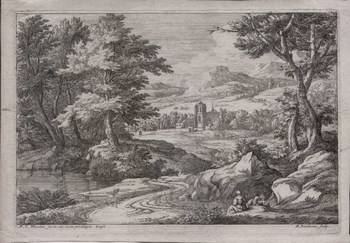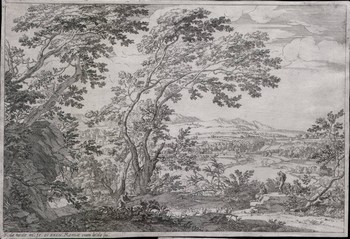|
12 by
17,50 cm |
12 by
17 cm |
|
The great French period was not earlier then the 18th century. At that time the centre for the arts has moved from Italy and the low countries to Paris. The court at Versailles was the mecenas and attracted artists from all over Europe. Of course the most inspired works were made a hundred years before with Jacques Callot as the most influential artist. We find his precise fine style back in many work of the later artists.
Adam Frans van der Meulen (1632-1690)
|
12 by
17,50 cm |
12 by
17 cm |
 |
 |
|
18 by
26 cm |
12 by
17,50 cm |
Frans Van der Meulen
(1632-1690) was
a famous painter of battle scenes originally from Brussels. He gained great
admiration in Paris for his paintings made during the campaigns of Louis XIV.
Most of his work is engraved by Baudewyns. The
combination of Baudewyns and Van der Meulen resulted in great quality works.
Adriaen Frans Boudewijns, (Dixmude 1640 -1711 Paris) (or Boudewyns,
Baudewyns, Baudoran, Bauduins), Brussels Flemish painter, draftsman, and
engraver, who died in 1711.
On 22 November 1665 he became a master in the Brussels Guild of Saint
Luke, after having been registered as a student of Ignatius van der Stock (fl
1660) in the same year. By 1669 he had fled to Paris, where he met fellow
Flemings, Pieter Boel, Abraham Genoels, Adam Frans van der Meulen, and Jan van
Hughtenburgh [1647–1733], and where he was mainly active as an engraver. He
engraved van der Meulen’s Battles of Louis XIV and numerous works by Genoels,
van Hughtenburgh, and by himself. These prints combine bold execution with
careful attention to detail. On 12 January 1670 his second marriage took place,
to Barbara van der Meulen, Frans’s sister. After her death in 1674, he left
Paris and returned to Brussels.
Jacques-Philippe Le Bas (1707-1783) / David Teniers (1610-1690)
21 by 27 cm
J.P. Le Bas is
perhaps the name we think of the first when speaking of 18th century's
graphics. At that time reproductive work had become the standard.
Le Bas showed his master quality and interpreted the 17th century's
masters at his best. David Teniers the most.
Both these works are very handsome landscapes.
All these works
are available for purchase.
Of course you can access larger images by clicking on the thumbnail images
above.
Contact me for a price list when interested.
Below you can access detail images to see the quality of these works.